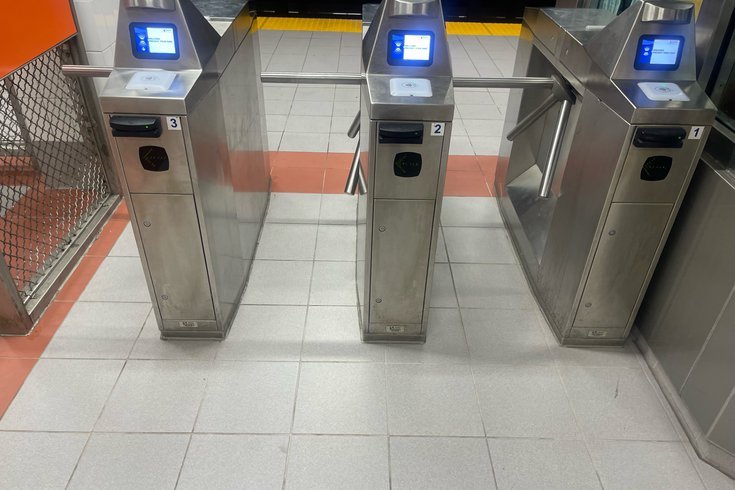
September 28, 2023
 Brian A. Saunders/PhillyVoice
Brian A. Saunders/PhillyVoice
Starting Friday, SEPTA riders can pay for fares by using debit and credit cards or digital apps such as Apple Pay or Google Pay. They simply need to tap a payment reader with their cards or phones – just like they would a Key card.
It is an all too familiar scenario for transit riders in Philadelphia: The subway can be heard pulling into the station, but running to catch it won't help those who need to add funds to their Key cards.
Starting Friday, it will be a little easier to catch that train. Riders can pay for trips by simply tapping their credit or debit cards on the payment reader. Those who use mobile wallets like Google Pay, Apple Pay or Samsung Pay can do likewise with their phones.
"This technology makes SEPTA more convenient for everyone to use SEPTA – whether you are a regular customer, occasional rider, or a new customer," SEPTA CEO and General Manager Leslie S. Richards said. "By giving our riders the option to pay their fares with what they already have in their pockets, we are making our system easier to use. This will be critical as we continue with efforts to rebuild ridership."
The contactless payment will be available on the Broad Street Line, Market Street Line, Norristown High Speed Line, buses and trolleys. Regional Rail will get its own contactless payment system upgrades in 2024.
The system brings SEPTA up to speed with other transit authorities. New York's Metropolitan Transportation Authority added contact payment methods in 2020. In August, it logged its 1 billionth tap.
Riders may still use their Key cards, too.
Since July, SEPTA has been allowing about 300 volunteers to test out the contactless fare technology. To pay, riders must tap the payment readers with their credit cards or phones – just like they would with a Key card. A single ride costs $2 – the same as using a Key card – and it is valid for up to two transfers on SEPTA buses, subways and trolleys, and the Norristown High Speed Line.
The payments do not require riders to have SEPTA cards or accounts; they are singular transactions. The payment readers use radio frequency identification to process the contactless payments.
The riders who tested the system said it was freeing to simply tap-and-ride without needing to remember their Key cards, SEPTA Chief of Staff Liz Smith told KYW.
"We got feedback, from those that are occasional riders, that it was a much more convenient way to pay," Smith said.
Though Friday marks the system's rollout, SEPTA spokesperson Andrew Busch said riders should expect some kinks in the system. The transit authority had to upgrade more than 2,000 payment readers. The vast majority of them are on buses.
SEPTA's buses and trolley cars received software updates wirelessly, and but the payment readers on some may have technical difficulties, he said. The payment readers at subway and underground trolley stations had their software upgrades hardwired.
In April, SEPTA announced plans to enhance its Key card platform so that riders can use contactless payment, buy fares for multiple riders in one purchase and increase the number of retail locations where people can buy fares. Implementation of "Key 2.0" is set to begin in 2025 and be completed by 2029.
Last December, SEPTA added Key Tix, which allows riders to purchase tickets on their smartphones.